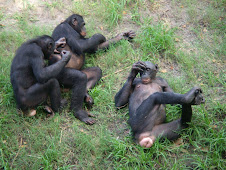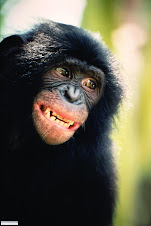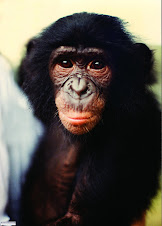I did not arrive in Africa until I was 30, but my journey started long before then. As a youngster, I longed for the tough and the untamed. I didn’t care for dolls. I was, instead, a strange little girl who played strange games, amusements that came from places in my mind that I could not fathom. Although generally well-behaved, I had bizarre compulsions to experience the outdoors and did so clandestinely when I suspected that it was a no-no, and openly otherwise.
When I was four, we lived on a farm across from a cranberry bog near South Carver, Massachusetts. One day my mother, who had already noted my distaste of indoor confinement, found me in the woods, stuffing mushrooms into my mouth. I refused to spit them out. Instead—I’d show her—I swallowed. Mom rushed me into the house, called the hospital, and followed their instructions. To induce vomiting, she made me drink heavily salted water followed by a mustard solution. Her report: the kid drank it all, glared furiously at her, and still refused to give up the mushrooms. When grilled, I admitted that I’d been consuming them for days. Finally, she relented, thinking, “All right, you little sneak”—perhaps that wasn’t the exact phrase—“you haven’t died yet.” I’m sure it stands out in her memory, but I don’t remember the details of that particular episode. In truth, I had sampled odd foods from the time I could walk. (I also stole snacks from the fifty-pound bag of dog food stored on the porch.)
When I was six, we moved to Waco, Texas. We were an Air Force family and mobility came with father’s uniform. Where before there were the lush woods in which I wandered at will, picking and pruning and gleaning the blueberry bushes like a wild creature, now it was rows and rows of boring, sun-baked suburbia. Here and there were precious strips of fallow, but the only wildlife they held were giant red ants and the horned toads that ate them.
Lacking untamed spaces—and perhaps rationalizing that it was my birthright—I began my career of childhood mischief. I persistently raided the neighbors’ fruit trees and wild plants, pretending that I was a deer browsing through, fattening myself for the coming winter. I was never apprehended, possibly because much of the fruit was left to rot anyway and possibly because I always took along my mongrel dog Pepi, who was really a “wolf” and loyal protector. From day to day, escapade to escapade, I was a feral creature, a Cro-Magnon, a trailblazer, an Australian aborigine, thriving by wits alone. There were no other people in my world, no buildings, no cars, no electricity. There was just nature and me.
I became the ringleader of a group of adventuresome friends. We raided squirrels’ nests, explored mossy drainage culverts under the streets, fished in rain puddles with bent safety pins, and cut open dead animals to see what was inside. In winter, during a rare Waco snowstorm, I built an “igloo” and pretended to be an Eskimo. I imagined killing seals, being pulled by huskies, and wondered what blubber would taste like. I pondered the rigors of glacial temperatures and whether I could survive wearing ten shirts, ten pairs of pants, and ten pairs of woolly socks.
Then, pursuing my father’s graduate school dreams, the family moved again. This time it was to 25 acres of undeveloped scrub south of Austin. There we lived for months in a shell of a condemned house that my dad purchased cheap at auction. It had been sawed into three pieces, moved to our property, and nailed back roughly together. While the well was being dug, we had no water and the north wind whistled through a building with no heat. This rurality was my delight and I could hardly be forced inside. I made a pact with the family that all my chores would be outdoors, which would excuse me from housebound duties.
Despite a dearth of edible plants, I continued to eat and taste wild foods and became, at least in my own mind, a wildcrafter. I chewed on mesquite beans, tried cooking cactus pads, chased armadillos, and hollowed out a den at the base of a sprawling cedar. I dined on mistletoe berries for years and then read somewhere that they were poisonous. I reasoned that the books were wrong because birds ate the sticky, translucent things. Surely they were edible, just as they were meant to be glued by bird beaks to branches for spawning fresh parasitic plants—if they were good enough for birds, they were good enough for me.
A few months after we moved to the ramshackle place, I was given two horses that the owner had no use for and didn’t want to feed. (She felt sorry for me because I had joined the pony club but had no horse to ride.) One was a 28-year-old, broken-down Thoroughbred, the other a blue-eyed white pony mare. The gelding’s name was “Biggie,” an ill-tempered, shaggy, sway-backed beast whose bony withers towered above my head. The pony was a half-wild creature that had never been trained properly. Because my father had left the military to return to school, we were poor, and with six kids, always on a tight budget. The family had little money to care for horses properly or to buy grain, a saddle, or even a decent fence. None of this mattered. I was determined to make it work.
My parents bought enough wire to construct a triangular pen anchored by three cedars where the animals could be kept, with ten bales of hay as my Christmas present. On weekends, I rode a half-mile to the main road whose shoulders presented a lush crop of weedy Johnson grass. There, cutting my fingers until they bled on the serrated blades, I pulled grass by hand, tied it into bundles and hauled it home. No sacrifice was too great. Every morning I arose at 5:30 to care for my beasts before school. Those were the best years of my childhood.
Horses set me free. I fashioned rope bridles and rode bareback. I became an explorer and rediscovered America. As a rancher, I scoured the range searching for lost steers. I was a hungry Indian scouting for bison. I stood on my steeds’ backs to steal the out-of-reach peaches and plums within a ten-mile radius. I imagined what it would be like to take a cayuse and follow the railroad right-of-way across America. I’d read about the Pan-American Highway and wondered if I could actually take a road all the way to Tierra del Fuego.
Subscribe to:
Post Comments (Atom)













No comments:
Post a Comment